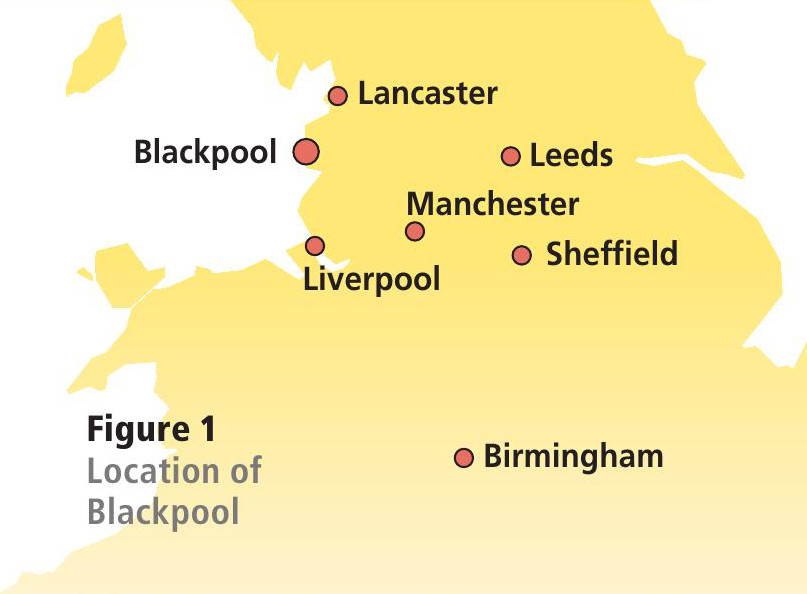
B lackpool is a seaside resort on the Lancashire coast (Figure 1). The 11 km long sandy beach has attracted visitors since Victorian times. The town was a small settlement until the middle of the nineteenth century when the railway arrived (1846). This provided an affordable way for people to get to the seaside, and factory workers started to come in large numbers, particularly after the Lancashire cotton mill owners started to close their factories for a week each summer in order to repair machinery. Each town had different ‘wakes weeks’, allowing Blackpool to benefit from a steady stream of visitors throughout the summer.
This soon encouraged entrepreneurs to build accommodation and attractions such as the piers, the Tower and the promenade. The town’s population rose rapidly from only 2,500 in 1850 to 47,000 in 1900 and 147,00 in 1950. This was the heyday for Blackpool, when up to 17 million visitors came to the town every year.
Your organisation does not have access to this article.
Sign up today to give your students the edge they need to achieve their best grades with subject expertise
Subscribe




